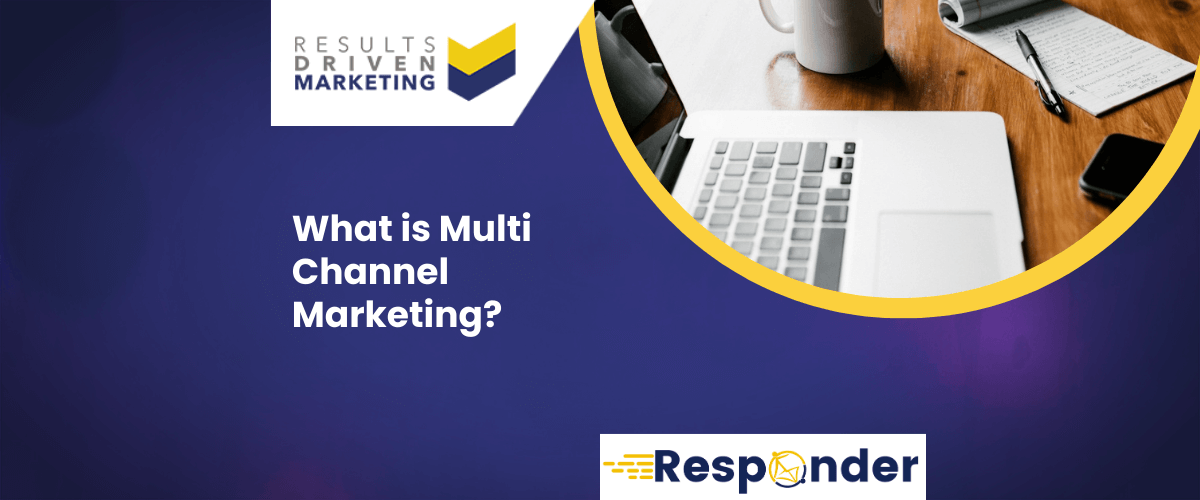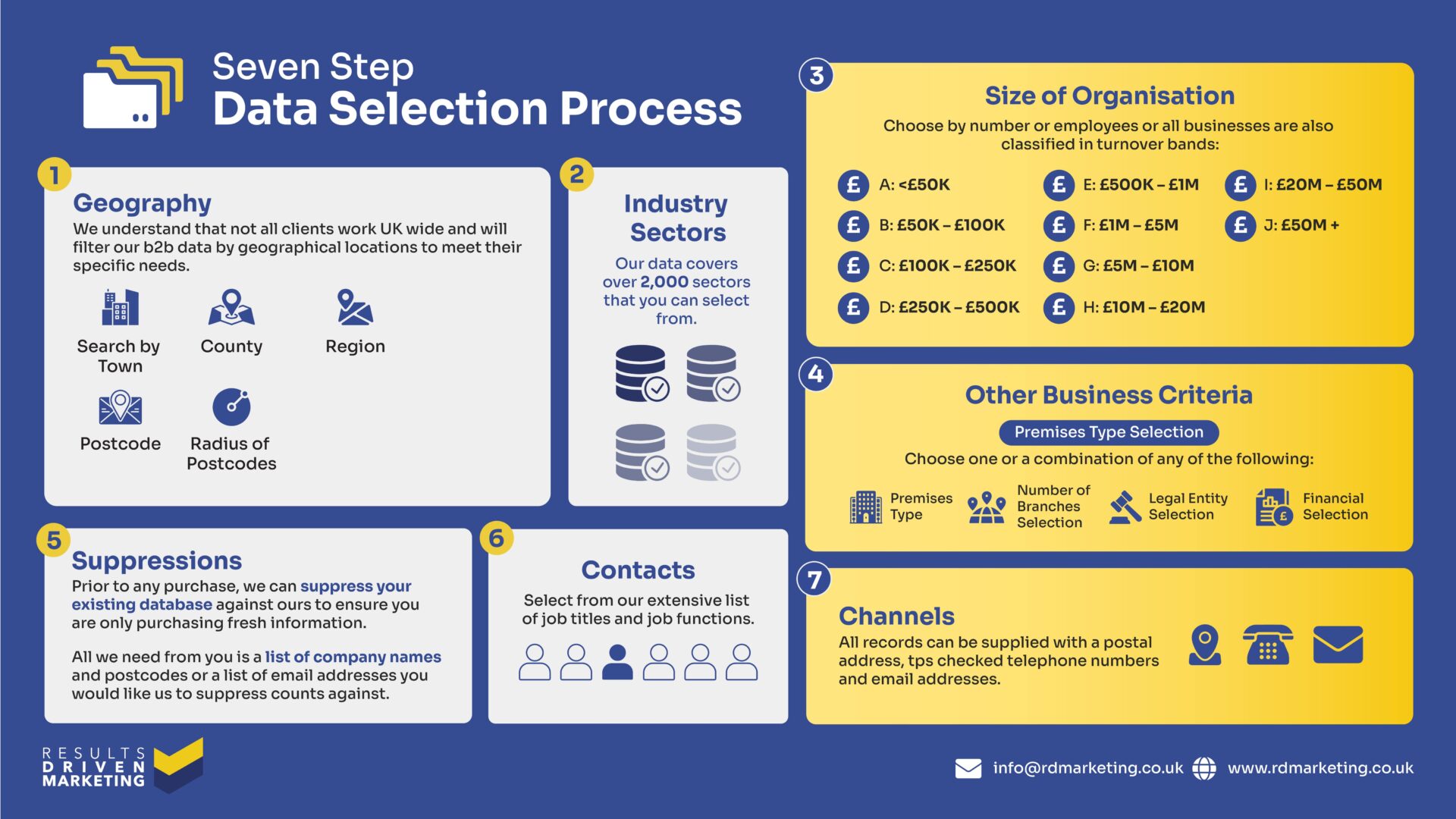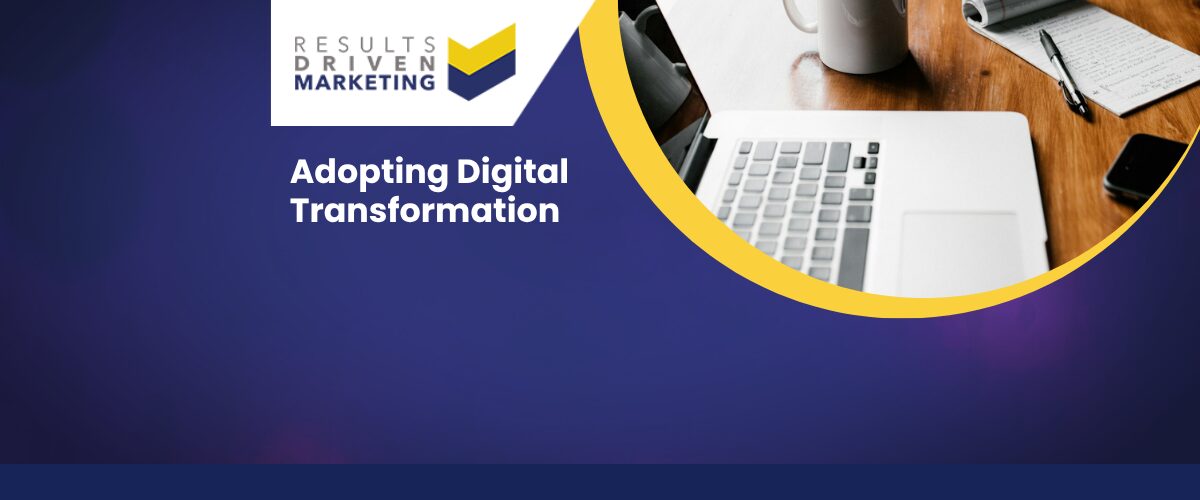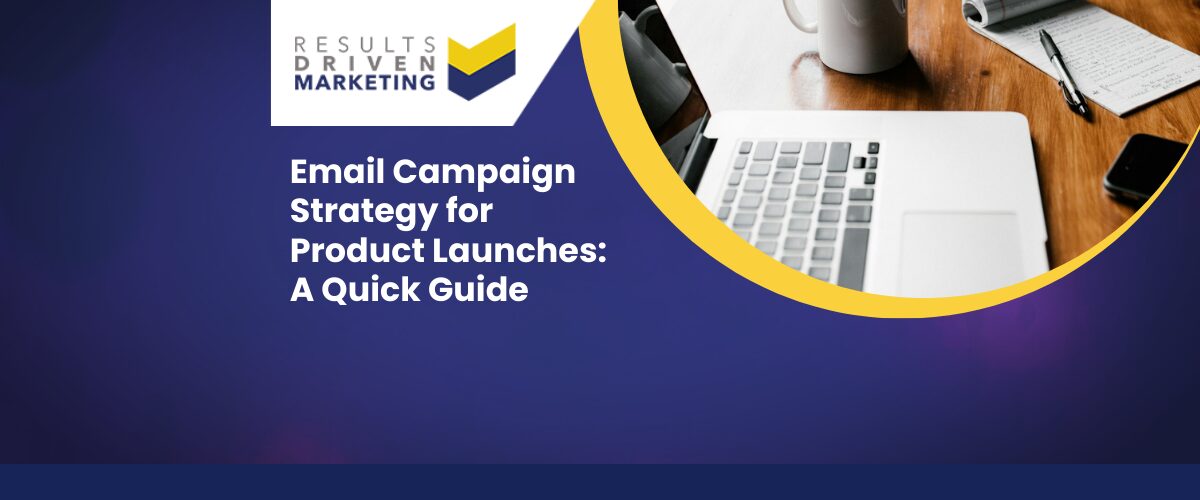
What is Multi Channel Marketing?
What is multi-channel marketing? It’s the practice of engaging customers through a variety of platforms—online and offline—to deliver a seamless, cohesive experience.
In today’s fast-paced digital landscape, this strategy has become indispensable for businesses aiming to reach their audience wherever they are, whether on social media, email, websites, or through direct mail campaigns.
Consumers no longer rely on a single platform to make decisions. Instead, they move between multiple touchpoints, comparing products, reading reviews, and engaging with brands across different channels.
Adopting a multi-channel marketing approach ensures your business stays visible and relevant, meeting customers on their preferred platforms while maintaining a consistent brand voice.
For example, combining email address list data with well-designed campaigns allows businesses to connect with their audience at the right time. Meanwhile, using direct mail data adds a personal touch that can stand out in a crowded digital inbox.
Here’s what you’ll learn in this guide:
- A clear and detailed explanation of what is multi-channel marketing.
- The advantages it offers in terms of reach, engagement, and ROI.
- Practical strategies to implement multi-channel campaigns effectively.
- Real-life examples of successful multi-channel marketing.
By the end, you’ll have actionable insights to transform your marketing efforts and create meaningful connections with your audience.
To make the most of multi-channel marketing, having access to high-quality data is crucial. RD Marketing offers:
- Comprehensive B2B data to target your ideal audience.
- Telemarketing data for direct outreach.
- Data cleansing services to ensure your information is always up-to-date.
Table of contents:
Why Businesses Can’t Rely on a Single Channel
Gone are the days when businesses could lean on just one or two marketing channels to reach their target audience. With the diversity of customer preferences and the overwhelming amount of content people consume daily, limiting yourself to one channel can be detrimental.
Customers expect to see consistent messaging across various platforms — be it email, social media, or even through a phone call.
If you’re focused solely on email marketing, you’re missing out on audiences that are more responsive to phone calls or direct mail.
The reality is, in today’s digital landscape, your target audience could be engaging with you on a website one moment, checking their email the next, and then scrolling through their social media feed — all in the span of a few minutes.
Without a multi-channel marketing strategy, you risk losing touch with these potential customers.
For instance, incorporating channels like Direct Mail Data or leveraging our Telemarketing Data can help you reach different segments of your target market, ensuring that no opportunity is missed.
As well as….
multi-channel marketing helps you create a seamless experience that matches how consumers interact with brands today.
The shift towards multi-channel marketing is not just a trend, but a necessity for businesses that want to thrive in a competitive market. It offers a broader reach, better customer engagement, and ensures your brand is visible on the platforms that matter most to your audience.
Businesses that fail to adopt this approach may find themselves struggling to keep up with customer expectations, ultimately affecting their bottom line.
So, if you’re still relying on just one or two channels, it’s time to rethink your strategy. At RD Marketing, we provide a range of services, from Email Address List Data to International Email Lists, that can help your business excel in a multi-channel world.
It’s about making sure your message is reaching the right people, at the right time, and through the right platform.
What is Multi-Channel Marketing?
When we talk about multi-channel marketing, we’re really referring to the practice of interacting with customers across a variety of different platforms.
These platforms, or “channels,” can include anything from social media, email, and websites to more traditional methods like phone calls, direct mail, or even face-to-face events. The idea behind multi-channel marketing is to create multiple touchpoints, allowing customers to engage with your brand wherever they prefer.
So, what is multi-channel marketing in its simplest form? It’s about giving your audience the choice. Customers can interact with your brand in the way that suits them best, whether that’s opening an email, responding to a text message, or even picking up the phone.
Each channel should work together, creating a seamless and consistent experience that enhances the customer journey, from awareness right through to conversion.
Single-Channel vs. multi-channel marketing
To better understand what multi-channel marketing is, it’s helpful to compare it with single-channel marketing. As the name suggests, single-channel marketing involves focusing all your efforts on just one platform or communication method.
Maybe you’re only using email marketing or solely relying on social media. While this might have worked a few years ago, today’s consumers expect more. They want flexibility. They want options.
On the other hand, multi-channel marketing ensures your brand is present on multiple platforms, giving your audience the freedom to engage with you however they feel most comfortable.
For example, while one customer might prefer interacting via email, another might respond better to a direct mail campaign.
That’s where services like Direct Mail Data can really come in handy. At RD Marketing, we offer comprehensive data services that allow you to tailor your marketing efforts across various channels.
What’s the Difference Between Multi-Channel and Omni-Channel Marketing?
Now, you might be wondering, what’s the difference between multi-channel marketing and omni-channel marketing? It’s a good question, and one that can sometimes cause confusion.
While both strategies use multiple platforms, omni-channel marketing takes things a step further by focusing on the integration between those channels. In omni-channel marketing, all channels are interconnected, working together to provide a cohesive and unified customer experience.
For example, if a customer starts interacting with your brand on social media but then decides to continue the conversation via email, omni-channel marketing ensures that the transition is smooth and that their previous interactions are accounted for.
In contrast, multi-channel marketing does not necessarily require this level of integration between platforms. The emphasis in multi-channel marketing is more on being present in as many places as possible, not necessarily creating a seamless experience between those places.
But that’s not to say multi-channel marketing is any less effective. In fact, it’s the foundation of a solid marketing strategy.
With the right tools and data, such as Telemarketing Data or Email Address List Data, you can still achieve a high level of engagement across different platforms, driving results without the need for full integration.
At RD Marketing, we provide various data solutions, like B2B Data and International Email Lists, to help businesses implement a strong multi-channel marketing strategy that reaches their audience wherever they may be.
Whether you’re looking to reach consumers via email, phone, or direct mail, we’ve got the tools to support your efforts.
Why multi-channel marketing Matters
In a world where consumers are constantly bombarded with messages, advertisements, and information, standing out can be a challenge. That’s where multi-channel marketing becomes essential.
But what is multi-channel marketing, and why does it matter in today’s competitive marketplace? Simply put, multi-channel marketing allows you to meet your audience wherever they are, offering flexibility and convenience for your customers while maximising your reach.
The Need for multi-channel marketing in a Competitive Marketplace
Let’s face it, consumers today have more options than ever before. Whether they’re browsing social media, checking their email, or even going through their mail, customers expect brands to be present wherever they are.
Relying on just one or two channels is no longer enough if you want to stay ahead of the competition.
By implementing a multi-channel marketing strategy, you can engage with your audience across various platforms, increasing your chances of reaching them when and where they’re most receptive.
For example, by utilising data-driven approaches like our Telemarketing Data or Direct Mail Data, you can engage with customers who may prefer more personal or traditional touchpoints, rather than just digital methods.
The Benefits of multi-channel marketing
So, what exactly are the benefits of multi-channel marketing? Why should businesses take the time and effort to build strategies that span multiple platforms?
Increased Customer Engagement: multi-channel marketing creates more touchpoints for potential customers to interact with your brand. The more opportunities you provide for engagement, the better your chances of turning interest into conversions. In fact, studies show that brands using multiple marketing channels experience 24% higher engagement rates than those relying on just a single channel.
Better Conversion Rates: More engagement naturally leads to better conversion rates. According to data from a recent marketing study, businesses using three or more channels in their marketing campaigns enjoy a 287% higher purchase rate compared to those using a single channel. For businesses using Email Marketing Management Services alongside traditional forms of outreach, the results are often impressive, as different audiences can be engaged effectively across multiple platforms.
Enhanced Customer Experience: When customers can choose how they interact with your brand, it makes for a more seamless and personalised experience. Some customers might prefer emails, while others are more responsive to phone calls or direct mail campaigns.
The flexibility provided by multi-channel marketing improves customer satisfaction, making your brand more accessible. Leveraging tools like our B2B Data can help ensure your messaging reaches the right audience in the right place, enhancing that personalised experience.
As well as….
Brand Consistency: multi-channel marketing allows you to maintain a consistent message across all platforms. Whether customers see your message via email, direct mail, or on social media, they will be exposed to the same key information, reinforcing brand trust. Ensuring that your campaigns maintain consistency, even across different channels, helps build a stronger and more reliable brand image.
Broader Audience Reach: By diversifying the platforms you use to reach customers, you significantly increase your overall audience reach. Not everyone uses social media, and not everyone reads their emails regularly. multi-channel marketing ensures that you’re not missing out on any potential opportunities to engage your audience, whether through International Email Lists or Consumer Data for more targeted outreach.
Statistics Show multi-channel marketing Works
If you’re still wondering what is multi-channel marketing and why it’s so crucial, consider these statistics:
- 73% of consumers use multiple channels throughout their shopping journey, proving that having a presence across multiple platforms is vital.
- Brands that have implemented a strong multi-channel marketing strategy see an average revenue increase of 9.5%.
- Consumers who interact with brands across multiple channels spend three to four times more than those who interact through a single channel.
These statistics underscore why multi-channel marketing isn’t just a “nice-to-have” strategy anymore. It’s a necessity if you want to remain competitive in today’s crowded marketplace.
At RD Marketing, we provide the tools and services you need to run a successful multi-channel campaign. Whether it’s cleaning up your data with our Data Cleansing Services, enriching your insights with our Data Enrichment Services, or ensuring compliance with our CTPS Checker, we have you covered.
Key Elements of a multi-channel marketing Strategy
If you’re wondering what is multi-channel marketing and how to implement it effectively, there are a few essential components that every successful strategy must have. These elements not only help guide your campaigns but ensure you’re getting the most out of each channel you use. So, let’s break it down step by step, starting with identifying your audience and working all the way to tracking and measuring performance.
Identifying Your Target Audience
Before you start spreading your message across various channels, it’s crucial to have a clear understanding of who you’re targeting. Different audiences respond better to different types of messaging and channels.
For example, a B2B company might find more success with email or telemarketing, while a B2C brand may lean more heavily on social media and direct mail. The key is understanding where your audience spends their time and how they prefer to engage.
Having the right data is critical here. By using targeted B2B Data or specific Consumer Data, you can refine your efforts to reach the right people at the right time, increasing your chances of success.
Choosing the Right Marketing Channels
Once you know who you’re targeting, the next step is choosing the most appropriate marketing channels.
The beauty of multi-channel marketing lies in its flexibility—you’re not limited to one approach. You can combine both digital and traditional platforms to cover all bases. Here’s a quick breakdown of some key channels you should consider:
- Digital Channels: These include email marketing, social media, websites, SEO, and even paid ads. For example, our Email Marketing Management Services make it easy to automate and optimise your email campaigns.
- Traditional Channels: Don’t overlook the power of direct mail and telemarketing. Using Direct Mail Data or Telemarketing Data can help you tap into audiences who prefer a more personal touch.
By spreading your efforts across multiple platforms, you’re not just casting a wider net—you’re allowing your audience to engage with you in ways that feel most comfortable to them.
Consistent Branding and Messaging
Consistency is everything when it comes to multi-channel marketing. Whether you’re running a social media campaign, sending out emails, or utilising direct mail, your messaging should be unified across every channel.
This ensures that no matter where or how a customer interacts with your brand, they are getting the same experience and message.
For instance, if you’re promoting a special offer via email using our Email Address List Data, that same offer should be reflected in your social media posts, direct mail campaigns, and even telemarketing efforts.
The idea is to create a seamless experience for your customers, making it easy for them to recognise and engage with your brand.
Cross-Channel Integration
One of the key factors that separate successful multi-channel marketing from just a scattergun approach is integration.
All your channels should be working together, feeding into one another to create a unified customer experience. This is where cross-channel integration comes into play.
For example, you might use email to direct customers to your website or encourage them to follow you on social media for more updates.
Cross-channel integration also applies to data. By using tools like our CTPS Checker or Data Cleansing Services, you can ensure your data is accurate and up-to-date, allowing you to run cohesive campaigns across all platforms without missing a beat.
Tracking and Measuring Performance
Last but definitely not least, tracking and measuring your performance is absolutely essential.
With multi-channel marketing, it’s important to understand which channels are performing best and where you might need to make adjustments. This allows you to optimise your campaigns, ensuring you’re getting the most out of each platform.
Here are a few key metrics to monitor:
- Engagement Rates: Are people opening your emails? Are they clicking on your social media posts? These metrics show how effective each channel is in grabbing your audience’s attention.
- Conversion Rates: Which channels are driving the most conversions? Whether it’s a purchase, a lead submission, or some other action, this is ultimately what matters most.
- Customer Journey: Understanding how customers move between channels is key to improving their overall experience. Are they engaging with your email and then converting through your website, or are they responding better to direct mail?
With tools like our Data Enrichment Services, you can gain deeper insights into your audience, helping you refine your multi-channel strategy and improve performance across the board.
By focusing on these five core elements—identifying your audience, selecting the right channels, maintaining consistent messaging, integrating your efforts, and tracking performance—you can create a multi-channel marketing strategy that truly delivers.
Whether you’re using International Email Lists to reach new markets or leveraging Telemarketing Data for a personal touch, RD Marketing has the tools and expertise to help you succeed across every channel.
Popular Marketing Channels in multi-channel marketing
One of the most exciting aspects of multi-channel marketing is the sheer number of platforms you can use to engage your audience.
From digital channels like email and social media to traditional methods such as direct mail and print, the possibilities are vast.
Understanding the strengths of each channel and how they contribute to your campaign’s overall success is essential for any business looking to implement a successful multi-channel marketing strategy.
But what is multi-channel marketing without the right mix of platforms? Let’s explore some of the most popular digital and traditional marketing channels you can use to connect with your audience and why they matter.
Digital Channels
Digital platforms are the backbone of most modern marketing strategies, and for good reason. These channels allow you to reach large audiences quickly and can be incredibly cost-effective. Here’s a breakdown of the key digital channels in multi-channel marketing:
Social Media
-
- Social media platforms like Facebook, Instagram, LinkedIn, and Twitter allow brands to engage directly with their audience. Social media is ideal for building brand awareness, creating communities, and promoting content. Since the majority of people today are active on one or more social platforms, this channel plays a vital role in any multi-channel approach.
Email Marketing
-
- Email marketing remains one of the most effective tools for direct customer communication. Whether it’s for promotions, newsletters, or nurturing leads, email allows you to connect personally with your audience. With services like Email Marketing Management Services from RD Marketing, you can manage and optimise your campaigns for maximum impact. Combine this with our Email Address List Data, and you’ll have a solid foundation for reaching your customers.
SEO (Search Engine Optimisation)
-
- SEO helps your brand appear in search engine results, driving organic traffic to your website. By optimising your content for search engines, you ensure that your audience can find you when they’re actively looking for products or services that you offer. Strong SEO strategies are crucial for long-term success and brand visibility.
As well as….
PPC (Pay-Per-Click Advertising)
-
- PPC ads allow you to pay for clicks or impressions, offering a way to quickly get in front of targeted audiences. Whether through Google Ads, social media ads, or other platforms, PPC can generate fast traffic and leads, making it a powerful complement to your organic efforts like SEO.
Websites
-
- Your website is often the cornerstone of your multi-channel marketing strategy. It serves as the hub where customers can learn about your business, explore your offerings, and make purchases. A well-optimised website should support all your other channels, ensuring that once you drive traffic from social media, email, or ads, visitors have a place to engage further.
Video Marketing
-
- Video content is booming. Platforms like YouTube, Instagram, and TikTok have made video an essential part of any digital strategy. Whether you’re creating product demos, customer testimonials, or educational content, videos can dramatically increase engagement and reach.
Mobile Apps
-
- With the rise of smartphones, mobile apps have become a key channel for engaging customers directly on their devices. Apps allow for push notifications, personalised offers, and a seamless user experience that can keep your brand top of mind.
Traditional Channels
While digital channels dominate today’s marketing landscape, traditional marketing still holds significant value, particularly in certain industries or demographics. These offline methods can help your brand stand out in a world filled with digital noise.
Direct Mail
-
- Direct mail marketing can feel personal and tangible, giving it a unique appeal that digital methods sometimes lack. By using Direct Mail Data, you can target specific audiences with tailored physical mailers. Many businesses find that combining direct mail with digital efforts increases response rates.
TV and Radio
-
- Television and radio advertising are excellent for broad-reaching campaigns. While these methods are often more expensive, they can create a strong brand presence, particularly for businesses looking to reach a wide audience quickly.
Print Advertising
-
- Print ads in magazines, newspapers, or brochures are still effective in reaching niche audiences. When targeted properly, print advertising can enhance your brand’s authority and reach, particularly when used alongside other channels.
How Each Channel Contributes to Campaign Success
Each of these channels plays a unique role in your multi-channel marketing strategy. Social media and email are fantastic for creating personal, direct interactions, while SEO and PPC ensure that your brand is found when people are searching for relevant products or services.
Video marketing and websites can help educate and engage customers, and traditional channels like direct mail, TV, and print can add a personal or local touch that resonates with specific segments of your audience.
For example, using Telemarketing Data in combination with email and social media allows you to connect with audiences who prefer a more direct form of communication.
Or, perhaps you’re targeting an international audience with our International Email Lists while also running local print ads for customers in specific regions.
When it comes to multi-channel marketing, it’s not just about being present on multiple platforms—it’s about ensuring that each platform supports and enhances the others.
The key is consistency in messaging and branding across all channels, creating a cohesive experience for your audience no matter how or where they engage with your business.
At RD Marketing, we help you do just that by providing top-tier B2B Data, Data Cleansing Services, and Data Enrichment Services to ensure your multi-channel campaigns are as effective as possible.
multi-channel marketing vs. Omni-Channel Marketing
As businesses explore new ways to engage with their audiences, a common question arises: what is multi-channel marketing, and how does it differ from omni-channel marketing?
While the two strategies may seem similar at first glance, they are actually quite distinct when it comes to execution, integration, and user experience. Let’s break down the key differences and help you understand which approach might be best for your business.
What is multi-channel marketing?
multi-channel marketing involves using multiple platforms or channels to reach and engage with your audience. Whether it’s through social media, email, direct mail, telemarketing, or even traditional advertising like TV and radio, the goal is to provide customers with multiple ways to interact with your brand.
Each channel operates independently, and while there may be some overlap in messaging, each platform typically functions on its own without the need for full integration.
For example, you might send out an email campaign using our Email Address List Data, while simultaneously running a Direct Mail Data campaign. Both efforts contribute to your overall marketing strategy, but they don’t necessarily connect or interact with one another.
What is Omni-Channel Marketing?
On the other hand, omni-channel marketing takes things a step further by not only using multiple channels but ensuring that those channels work together seamlessly. In omni-channel marketing, every touchpoint is integrated, providing customers with a unified experience.
Whether they’re engaging with your brand via email, visiting your website, or interacting on social media, the messaging is consistent, and the transition between channels feels natural.
Let’s say a customer receives a promotional email, clicks through to your website, and later visits your physical store. With omni-channel marketing, their experience remains cohesive and personalised at every stage.
The focus is on creating a smooth and unified journey, no matter how the customer chooses to interact.
Key Differences Between Multi-Channel and Omni-Channel Marketing
While both strategies use multiple platforms to engage customers, there are a few critical differences that set them apart:
Integration
-
- multi-channel marketing: In multi-channel marketing, channels are often siloed. Your email campaigns might run separately from your social media efforts, and your direct mail campaigns might not sync up with your telemarketing calls. The focus is on reaching customers in various places, but each channel operates on its own.
- Omni-Channel Marketing: Omni-channel marketing takes integration to the next level. All channels are connected and work together to provide a consistent experience. For instance, if a customer abandons a shopping cart on your website, an omni-channel strategy might trigger a follow-up email reminding them to complete their purchase.
User Experience
-
- multi-channel marketing: While multi-channel marketing allows customers to choose how they interact with your brand, the experience can feel fragmented. A customer might receive inconsistent messaging across different platforms or experience gaps in communication.
- Omni-Channel Marketing: With omni-channel marketing, the user experience is seamless. Whether customers engage via email, social media, or in person, the transition between channels feels smooth, and the messaging remains consistent. For example, your in-store promotions might align perfectly with your online ads, creating a holistic customer journey.
Messaging
-
- multi-channel marketing: In multi-channel marketing, messaging may vary slightly from one platform to another. You might tailor your message based on the strengths of each platform, but there’s not always a focus on creating a unified narrative across all channels.
- Omni-Channel Marketing: Omni-channel marketing ensures that messaging is consistent across all platforms. Whether a customer sees your brand on Facebook, receives a phone call through your Telemarketing Data, or interacts with a representative in-store, the message and branding are the same. This consistency helps build trust and familiarity with your brand.
Which Approach is Right for You?
Deciding between multi-channel and omni-channel marketing depends on your business goals and resources. multi-channel marketing is often easier to implement and provides flexibility by allowing you to tailor campaigns to specific platforms.
It’s an excellent choice for businesses looking to reach a wide audience across various touchpoints.
However, if your goal is to create a truly personalised and cohesive customer experience, omni-channel marketing might be the better option. By integrating your channels and creating a seamless journey, you can deepen customer relationships and improve overall engagement.
At RD Marketing, we offer the tools and services to help you succeed with either approach. Whether you need targeted B2B Data, effective Email Marketing Management Services, or assistance with Data Cleansing, we’ve got the resources to support your multi-channel or omni-channel campaigns.
How to Implement a multi-channel marketing Strategy
Now that we’ve covered what is multi-channel marketing and why it matters, let’s dive into the step-by-step process of building a successful multi-channel marketing strategy. Implementing this approach requires careful planning, attention to customer preferences, and a smart use of technology.
With the right tools and guidance, you can create a campaign that resonates across multiple platforms, providing your audience with a seamless and personalised experience.
Here’s a breakdown of the key steps you need to follow:
Assessing the Customer Journey and Preferences
The first step in any effective multi-channel marketing strategy is understanding your customers—who they are, where they interact, and how they prefer to engage with your brand.
Mapping out the customer journey allows you to identify the key touchpoints where your audience is most active.
Start by asking questions like:
- Where are your customers most likely to engage with your brand? (Social media, email, direct mail, etc.)
- What are their preferences for communication? Are they more responsive to emails, phone calls, or social media posts?
- What are the typical stages of their purchasing journey, and how can you be present at each stage?
By understanding these preferences, you can tailor your approach. For example, if your audience is more responsive to direct mail, leveraging Direct Mail Data can help you target them more effectively.
For digital communication, using Email Address List Data ensures you’re reaching the right people through email marketing campaigns.
Integrating Technology
Technology is the backbone of any modern multi-channel marketing strategy. To effectively manage multiple channels, you’ll need the right tools to streamline communication, gather insights, and automate processes.
This is where marketing automation platforms, customer relationship management (CRM) tools, and data analytics come into play.
- Marketing Automation: With tools like Email Marketing Management Services, you can schedule and automate emails, track user interactions, and nurture leads across different touchpoints. Automation helps ensure that your customers receive the right message at the right time, no matter which channel they’re on.
- CRM Systems: CRM tools allow you to manage customer interactions across multiple platforms. By integrating your email, social media, and telemarketing efforts, you can keep track of customer touchpoints and ensure a unified approach.
- Data Analytics: Using data analytics to monitor performance across all your channels is key to optimizing your campaigns. Whether it’s through Data Enrichment Services or monitoring compliance with our CTPS Checker, having access to rich insights helps you make informed decisions on where to focus your efforts.
Crafting Tailored Messages for Different Channels
Once you understand your customer journey and have the right tools in place, the next step is crafting tailored messages for each platform. Remember, while the overall message of your campaign should remain consistent, it’s important to adapt it for the specific channel you’re using.
Here’s how to approach messaging:
- Email Marketing: Emails should be personalised and direct. Use tools like our Email Marketing Management Services to automate campaigns and segment your audience for more effective outreach.
- Social Media: Focus on engagement. Social media posts should be conversational and designed to encourage interaction, such as likes, comments, or shares.
- Telemarketing: When using Telemarketing Data, your message should feel more personal. Phone calls allow you to build a one-on-one relationship with your audience, so make sure your script is conversational and solution-focused.
- Direct Mail: Direct mail can have a more tactile, personal feel. Use Direct Mail Data to create customised pieces that resonate with your audience, perhaps including special offers or personalised greetings.
Tailoring your message for each channel ensures your audience receives a relevant and engaging experience, no matter how they interact with your brand.
Aligning Teams Across Channels
One of the most critical aspects of a multi-channel strategy is ensuring that all departments—whether it’s sales, marketing, or customer service—are aligned and working together. A well-coordinated team ensures that the customer’s journey is smooth and cohesive across all platforms.
Here’s how to align your teams:
- Regular Communication: Make sure teams have regular meetings to discuss campaign goals, results, and customer feedback.
- Shared Goals: Align your teams around common goals, such as improving customer engagement or boosting conversion rates. This ensures everyone is working towards the same objectives.
- Cross-Channel Knowledge: Your sales, marketing, and customer service teams should be aware of how each channel interacts with the others. For example, your sales team should know when customers have received marketing emails, and your customer service team should be aware of recent telemarketing efforts.
By aligning your teams, you create a unified approach to your marketing efforts, ensuring that customers receive a consistent experience across every platform they interact with.
Bringing It All Together
When done right, multi-channel marketing can significantly boost engagement and conversion rates. But, as you can see, it takes careful planning and the right combination of technology, data, and teamwork to get it right.
At RD Marketing, we offer a range of services to help make this process easier for you. Whether it’s providing high-quality B2B Data or ensuring your contact lists are up-to-date with our Data Cleansing Services, we’re here to support every step of your multi-channel strategy.
Common Challenges in multi-channel marketing (and How to Overcome Them)
While multi-channel marketing offers incredible opportunities for businesses to engage with their audience across different platforms, it doesn’t come without its challenges.
From maintaining consistency in messaging to efficiently managing multiple channels, marketers face several hurdles when implementing a multi-channel marketing strategy. But don’t worry—each challenge has a solution, and with the right tools and approach, you can overcome these obstacles.
Difficulty in Maintaining Consistent Messaging Across Channels
One of the biggest challenges in multi-channel marketing is keeping your messaging consistent across all platforms. Whether it’s social media, email, direct mail, or telemarketing, your audience should receive the same core message, regardless of the channel.
However, when managing multiple platforms, the risk of fragmented or misaligned messaging increases, which can confuse your audience or weaken your brand’s identity.
How to Overcome This:
- Unified Brand Guidelines: Establish clear brand guidelines that outline your messaging, tone of voice, and visual elements. Make sure everyone on your team follows these guidelines to ensure consistency.
- Content Calendars: Use content calendars to plan your campaigns across all channels. This way, you can ensure that the message delivered via email is aligned with what’s being shared on social media or through direct mail.
- Automation Tools: Implement marketing automation platforms, like our Email Marketing Management Services, which allow you to schedule and send consistent messages across different channels without missing a beat.
Managing Multiple Channels Efficiently
Juggling multiple channels can quickly become overwhelming. Each platform comes with its own unique features and management requirements, and it can be tough to keep track of everything—especially when you’re handling email, social media, direct mail, and telemarketing simultaneously.
How to Overcome This:
- Marketing Automation Software: Automating certain processes can save you valuable time and reduce the risk of errors. For example, using an email automation tool allows you to send personalised messages to your audience based on their behavior or preferences, while our Telemarketing Data can help streamline telemarketing efforts by targeting the right contacts.
- Unified CRM Systems: Using a Customer Relationship Management (CRM) system helps integrate all your channels into one place. It allows you to manage customer interactions, track performance, and ensure that each channel is working in sync with the others.
- Delegation: Divide responsibilities across your team. Assign dedicated individuals to oversee specific channels, whether it’s social media, email marketing, or direct mail. This ensures that each platform is given proper attention.
Measuring Performance Across Different Platforms
Another common challenge in multi-channel marketing is measuring the effectiveness of each channel. With so many moving parts, it can be difficult to know which platforms are driving the best results and which ones need adjustment.
Are your email campaigns generating conversions, or is your social media engagement lagging behind? Without proper tracking, you might struggle to allocate resources effectively.
How to Overcome This:
- Data Analytics Tools: Invest in data analytics tools that provide insights into each channel’s performance. Whether you’re analysing email open rates or tracking direct mail responses, having access to the right data is key to optimising your strategy. Tools like our Data Enrichment Services can provide deeper insights into your audience, helping you make informed decisions.
- A/B Testing: Use A/B testing to evaluate different messages, offers, and designs across channels. For example, test different subject lines in your email campaigns, or experiment with various headlines in your social media ads to see what resonates best with your audience.
- Attribution Models: Implement attribution models to understand how each channel contributes to your customer’s journey. This will give you a clearer picture of which platforms are driving conversions and where adjustments may be needed.
Keeping Data Accurate and Up-to-Date
Another frequent issue in multi-channel marketing is ensuring that your data remains accurate and up-to-date across all platforms.
If you’re working with an outdated email list or inaccurate contact information, your efforts could fall flat, leading to wasted resources and reduced campaign performance.
How to Overcome This:
- Regular Data Cleansing: Regularly cleaning your data ensures that you’re working with accurate and reliable information. Our Data Cleansing Services help remove duplicates, correct errors, and update outdated information to ensure your campaigns are reaching the right people.
- Data Enrichment: Adding additional information to your existing contact lists can improve the effectiveness of your campaigns. For instance, using B2B Data or Consumer Data can give you more detailed insights into your audience, allowing for more personalised and targeted messaging.
- Compliance Checks: To avoid potential legal issues, make sure your data is compliant with regulations like GDPR or the Telephone Preference Service. Our CTPS Checker helps ensure your telemarketing efforts remain compliant by screening contacts against the Telephone Preference Service (TPS) database.
Integrating Channels for a Seamless Customer Experience
In multi-channel marketing, it’s not just about being present on various platforms; it’s about making sure these platforms work together to create a seamless customer experience.
However, integrating channels effectively can be a complex process. Customers may engage with you on one channel but expect a smooth transition to another—like moving from a social media ad to your website, or from an email to a direct mail follow-up.
How to Overcome This:
- Cross-Channel Campaigns: Create campaigns that connect multiple channels. For example, after running a successful email campaign using our International Email List, you can follow up with a personalised piece of direct mail, ensuring that your audience is engaged through various touchpoints.
- Centralised CRM Systems: As mentioned earlier, a good CRM system integrates all your channels, allowing you to track and manage customer interactions across platforms. This ensures a smooth and personalised experience for each customer, no matter how they engage with your brand.
By addressing these common challenges, your multi-channel marketing strategy will become more effective, efficient, and impactful.
At RD Marketing, we’re here to support you with the data, tools, and strategies needed to overcome these hurdles. Whether it’s through Direct Mail Data or Email Address List Data, we have the resources to ensure your campaigns are a success.
Conclusion
In today’s dynamic marketplace, the importance of multi-channel marketing cannot be overstated. As consumers engage with brands across multiple touchpoints—be it email, social media, direct mail, or even a phone call—businesses need to be present and consistent on these platforms to capture attention and drive meaningful engagement.
Understanding what is multi-channel marketing and how to execute it effectively is crucial for long-term success.
By leveraging the right combination of digital and traditional channels, businesses can broaden their reach, improve customer experiences, and ultimately drive conversions.
Whether you’re just starting with multi-channel marketing or looking to refine your strategy, experimenting with various platforms is key to understanding what works best for your audience.
Why multi-channel marketing Matters for Growth:
- Wider Reach: You’re able to engage with customers where they are, be it through Email Address List Data or Direct Mail Data, ensuring you leave no touchpoint uncovered.
- Better Engagement: A multi-channel approach allows you to tailor your messages and offers for each platform, providing more personalised and relevant content to your audience.
- Higher Conversion Rates: When customers receive consistent, personalised experiences across multiple channels, they’re more likely to engage and convert.
Get Professional Help for Your Multi-Channel Strategy
While the potential of multi-channel marketing is immense, executing it effectively can be challenging. Coordinating across multiple platforms, maintaining consistent messaging, and tracking performance can stretch your resources. That’s why seeking professional help is a smart move.
At RD Marketing, we offer a variety of services designed to help businesses implement robust multi-channel marketing strategies. Whether you need reliable B2B Data, targeted Telemarketing Data, or compliance tools like our CTPS Checker, we’re here to help you succeed across every platform.
We can also ensure your campaigns are built on clean, accurate data with our Data Cleansing Services and enhance your customer insights with Data Enrichment Services.
Who are we?
Thinking about “how do I buy data“?
Providing b2b database solutions is our passion.
Offering a consultancy service prior to purchase, our advisors always aim to supply a database that meets your specific marketing needs, exactly.
We also supply email marketing solutions with our email marketing platform and email automation software.
Results Driven Marketing have the best data of email lists for your networking solutions as well as direct mailing lists & telemarketing data in telemarketing lists
We provide data cleansing and data enrichment services to make sure you get the best data quality.
We provide email marketing lists and an international email list for your business needs.
At RDM We provide b2c data as we have connections with the best b2c data brokers.
A good quality b2b database is the heartbeat of any direct marketing campaign…
It makes sense to ensure you have access to the best!
Call us today on 0191 406 6399 to discuss your specific needs.
Results Driven Marketing
0191 406 6399











